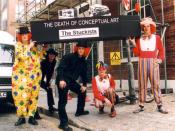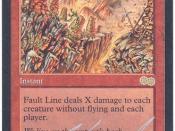Moshekwa Langa's awe-inspiring innovations in conceptual art and outstanding adeptness at combining political, social and personal issues has made his ascent to being one of South Africa's greatest artists rather easy. Many of his works tackle the topics of classification, classism and identity. The materials he uses are based purely on the availability and cost rather than for any sort of thought invoking quality. The materials he uses do, in the end, present the viewer with a certain intellectual depth, which is perhaps a play on the human condition of finding hidden meanings in things we don't quite understand. The artist states that all his works are part of a continuous theme that can't be separated or categorized and insists that most of his pieces remain untitled because 'that would fix things'.
What distinguishes Langa's work from others' is his refreshingly clever and inventive use of throw-away materials ranging from concrete sacks, plastic bags filled with paper and cooking fat to coat hangers and bubble wrap.
For Langa, what matters is the feeling of oneness he attempts to achieve with the material he assembles, resulting in the profound conceptual art he well known for.
Skins (1996) immediately conjures up images of genocide, slaughter and symbolizes the mounting up of carcasses for political or social benefit. In a political sense it weighs the consequences and benefits of war, highlighting the loss of human life against the personal gain of government officials. Social issues concerning livestock are also addressed in this piece, weighing the atrocious treatment of cattle with the minor social benefits it creates.
Fault Lines (1996) is an installation where sticky, flayed strips of brown paper bags into wire mesh with crumbling pieces of masonite scattered across the floor. The piece is a direct symbol of deception, truth and...


